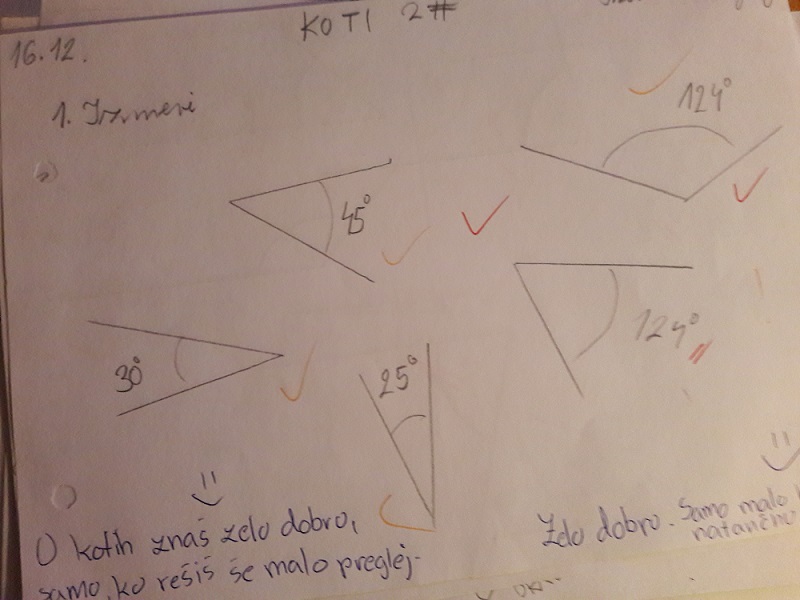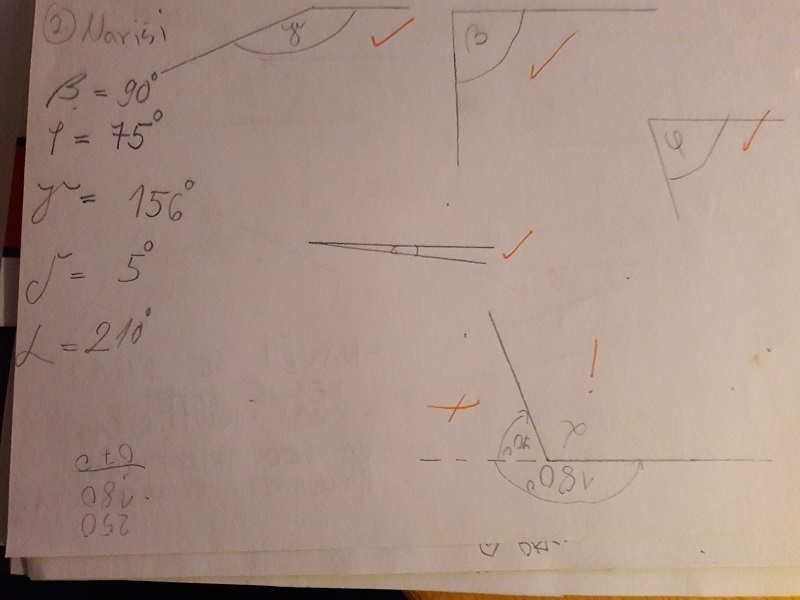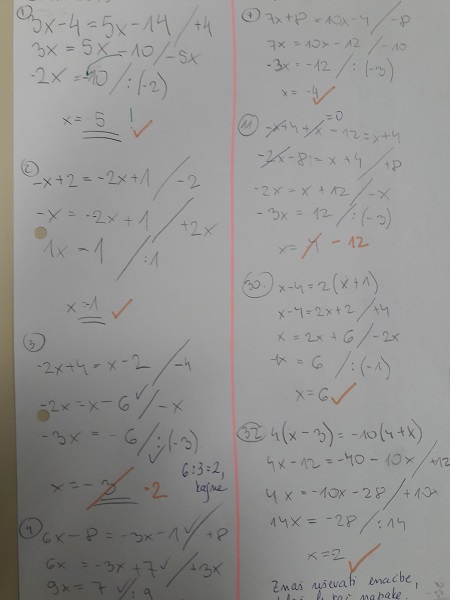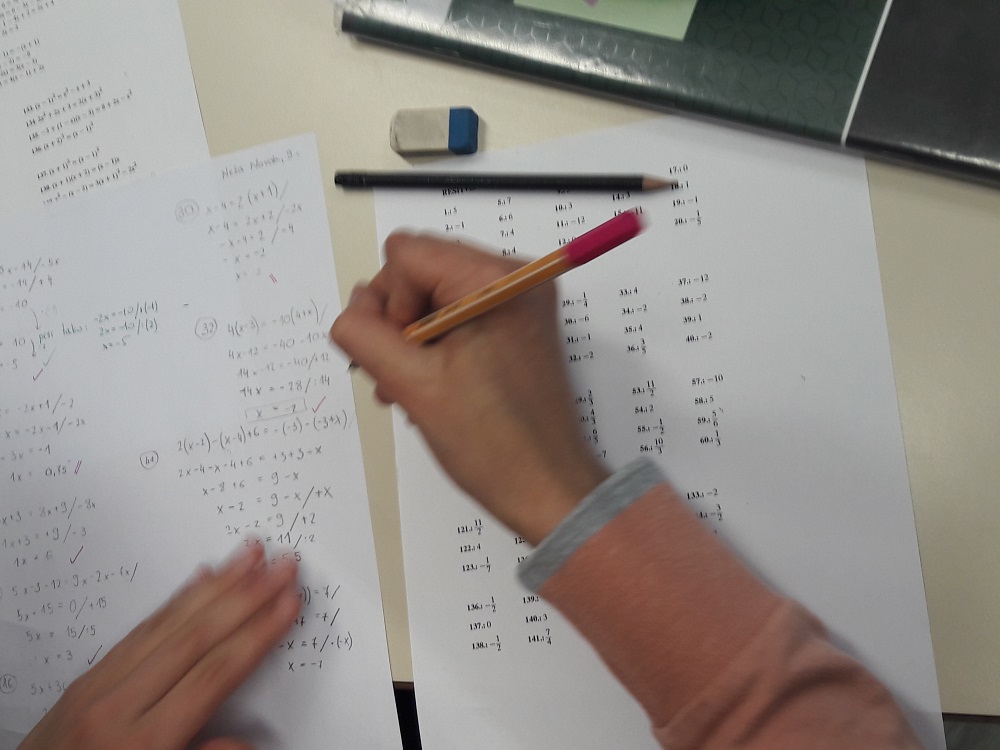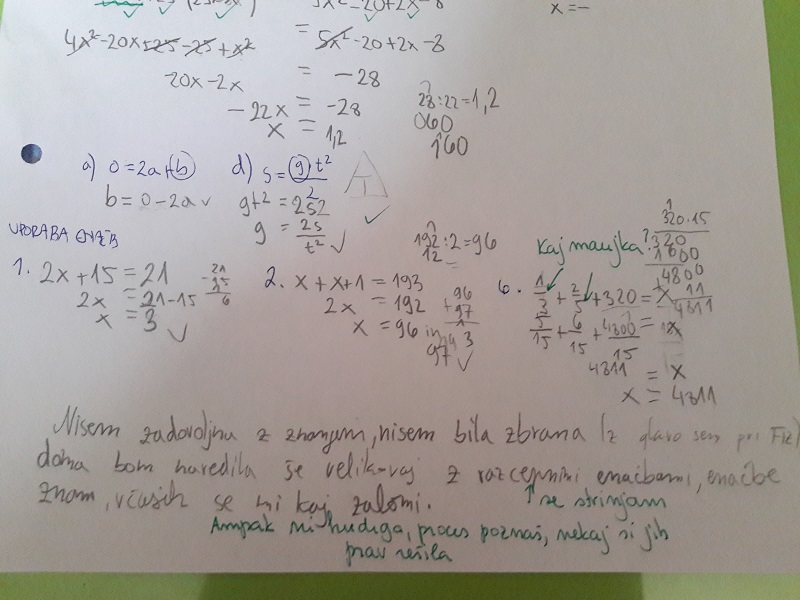ACTIVE LEARNING AND COLLECTING EVIDENCE OF LEARNING Learning, evidence
Class can take place in many different ways, based on what the goals of each individual lesson are. For example:
-
- The teacher explains the material to the entire class first, followed by individual work, tasks assigned to pupils based on their skill level or group assignments (the pupils can choose between these options based on the goals they want to achieve).
- The lesson can also include independent note-taking or studying. All the activities are followed by a mutual discussion, time for questions and answers, and assigning exercises of various skill levels to individuals, pairs or groups.
- Group assignments can be carried out on different skill levels (in heterogeneous or homogeneous groups).
While working in groups or pairs, my pupils can call on me for help and additional explanations. I always make sure that any homework or additional assignments my pupils receive are suitable for their skills and prior knowledge.
To ensure the equal participation of all pupils, we can use the following teaching techniques (D. Wiliam):
NO HANDS UP – The pupils don’t raise their hands. Instead I can call on any pupil (for example: with the use of name sticks to help select a random participant). If the pupil doesn’t know the answer or doesn’t wish to answer, they can say so and ask another pupil to help them. I give the pupils some time to think about their answer and come back to them later.
NAME STICKS – I write the pupils’ names on wooden sticks. I keep these sticks in a pencil holder on my desk and use them to randomly pick one of my pupils. This is how I avoid calling on only a handful of pupils.
THE AMOUNT OF TIME that pupils typically have to answer a question is only a couple of seconds. Black suggests that this response time should be extended to 20 seconds instead. This is why I always ask my question first and give my pupils time to think or consult a friend before reaching for the name sticks.
EXAMPLES FROM THE CLASSROOMCollecting Evidence of Learning
Collecting evidence of knowledge and assessing what the pupils have learned should be ongoing throughout the learning process. The purpose of monitoring knowledge and assessing what the pupils have learned is learning about how well each pupil understands the study material and getting the feedback needed to plan further class activities.
I plan the process of knowledge assessment together with my pupils. We use questions like:
- How can you show me what you already know and how much you have learned?
- When would be the best time for you to showcase your knowledge?
- Which pieces of information would you find the most helpful and beneficial for your learning process and for your progress?
We include the pupils’ wishes into the knowledge assessment process.
In the majority of cases, my pupils already hand in their first finished assignment (evidence of learning) after a couple of lessons. This finished “product” is then added to their portfolio. We always start by allowing the pupils to showcase that which they are most confident in. Most often pupils choose a couple of exercises from the course book for their first assignment. They use the selection of exercises to put together a “test” for themselves, then they solve the exercises, check their answer by using the solutions and answers provided in their course books and hand it in. I keep my own record of each pupil where I track their work, their projects, their assignments, and their progress (as well as my expectations for their achievements).
The second assignment can be completed with the help and cooperation of a classmate. For example, the pupils make each other a test. At the beginning, pupils usually need a lot of guidance and help during this process because they don’t know how to approach this method of studying and learning. Once they create their tests, they swap them and solve them. When they finish writing the test, they can also check each other’s answers by using the solutions available in the course books. This method of studying teaches pupils how to find appropriate exercises and how to solve them. It basically teaches them how to study.
The third assignment is decided on by taking several factors into account. We can either implement the peer-assessment (see the second assignment) system again or, just to be safe, I prepare a test for my pupils (so that I can check where they are in the learning process). The tests aren’t graded based on points or percentages. Their purpose is to encourage the pupils to try harder to reach their goals, improve their knowledge, and prevent them from competing with one another or comparing themselves to others. Pupils need to be given the chance to improve their knowledge as well as the feedback and assistance necessary to do so. They need guidance on how to study and research their material instead of only focusing on their past mistakes.


EXAMPLES FROM THE CLASSROOMExample 1
STEP 1 The pupils choose a critical friend, discuss who that person could be and what their tasks are.
STEP 2 They write down who selected which exercises. For example: they take a sheet of paper and write down 5 different degrees of angles between 0° and 180° (some acute, some obtuse). On the other side of the piece of paper they draw three different angles and a shape of their choosing.
STEP 3: They give the piece of paper, the “test” to their critical friend and ask them to solve it. The critical friend signs their name at the top of the “test” and then proceeds to draw the angles on page 1 and measure both sides of the angles drawn on page 2 using a protractor.
STEP 4 Then the critical friend gives the “test” back to the pupil who composed it so that they can check the answers. Lastly, the pupils hand in all the tests and the teacher collects them.
STEP 5 The pupils who create and “grade” the test also write a note outlining which exercises their critical friends solved correctly, what they still need to work on, and a few words of praise and encouragement.
STEP 6 The teacher checks all the tests, adds their own notes and pieces of advice, assigns more exercises if needed or if they determine that a pupil hasn’t fully achieved a particular goal yet. The teacher’s feedback should include a list of everything a pupil has learned, a piece of advice on how to study in the future, some praise, and an invitation for the pupil to come to office hours if necessary.
EXAMPLES FROM THE CLASSROOMExample 2
1st ASSIGNMENT
The pupils always start out by doing something they are good at. For example: they select three exercises from the course book that they already know, solve them again, and hand them in as their first assignment. They write down their answers on a piece of paper and check their answers using the solutions provided in the course book. They can also hand it in for the teacher to check. The first assignment is usually handed in after 2-3 lessons covering a particular topic.
2nd ASSIGNMENT (after 5-6 lessons)
Pupils form pairs (comprised of pupils on the same skill level). The pupils choose three exercises (three equations in this case) for one another. They each solve their assigned exercises, check their answers, and write down their notes, comments, and feedback.
3rd ASSIGNMENT (after 8-10 lessons)
The pupils and I choose a few exercises (for various skill levels) and project them onto the board. The pupils pick three exercises to solve by themselves. When they are done, the I give the pupils the solutions to the exercises so that they can check their own answers, write a self-evaluation, and make a plan on how they will improve.
4th ASSIGNMENT
Either the pupils make each other a test (at home or in school) or the teacher makes tests for the entire class. When the pupils finish solving the test, they form groups of 3 and solve another test (that can get them the highest possible grade) together in heterogeneous groups. Pupils usually put a lot of effort into solving the test, they all want to show that their way of thinking and solving the exercises is the right one. They often argue about who is right and who is wrong. These heated Maths debates are interesting to observe. Then, the pupils can use the solutions provided by the teacher to check how well they did on the test. They write their self-reflection or even grade the test based on the criteria given. The teacher also helps suggest which grade is the most suitable. The pupils and the teacher then discuss what their expectations were and whether they were fulfilled, they analyse the entire learning process, make a plan on how to improve before the next stage of knowledge assessment, and agree on when the grade will be entered into the grade book.



